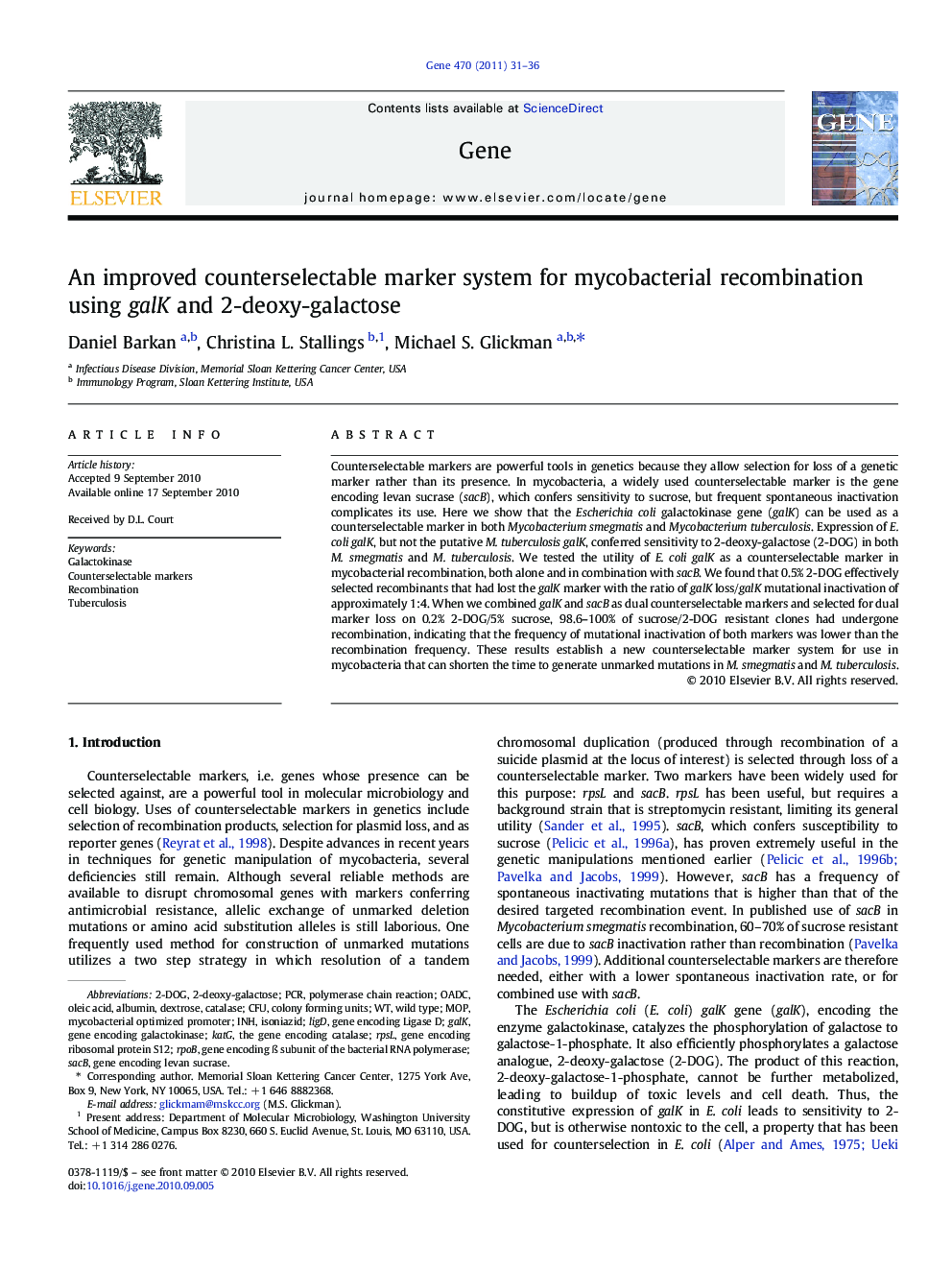| Article ID | Journal | Published Year | Pages | File Type |
|---|---|---|---|---|
| 2818472 | Gene | 2011 | 6 Pages |
Counterselectable markers are powerful tools in genetics because they allow selection for loss of a genetic marker rather than its presence. In mycobacteria, a widely used counterselectable marker is the gene encoding levan sucrase (sacB), which confers sensitivity to sucrose, but frequent spontaneous inactivation complicates its use. Here we show that the Escherichia coli galactokinase gene (galK) can be used as a counterselectable marker in both Mycobacterium smegmatis and Mycobacterium tuberculosis. Expression of E. coli galK, but not the putative M. tuberculosis galK, conferred sensitivity to 2-deoxy-galactose (2-DOG) in both M. smegmatis and M. tuberculosis. We tested the utility of E. coli galK as a counterselectable marker in mycobacterial recombination, both alone and in combination with sacB. We found that 0.5% 2-DOG effectively selected recombinants that had lost the galK marker with the ratio of galK loss/galK mutational inactivation of approximately 1:4. When we combined galK and sacB as dual counterselectable markers and selected for dual marker loss on 0.2% 2-DOG/5% sucrose, 98.6–100% of sucrose/2-DOG resistant clones had undergone recombination, indicating that the frequency of mutational inactivation of both markers was lower than the recombination frequency. These results establish a new counterselectable marker system for use in mycobacteria that can shorten the time to generate unmarked mutations in M. smegmatis and M. tuberculosis.
